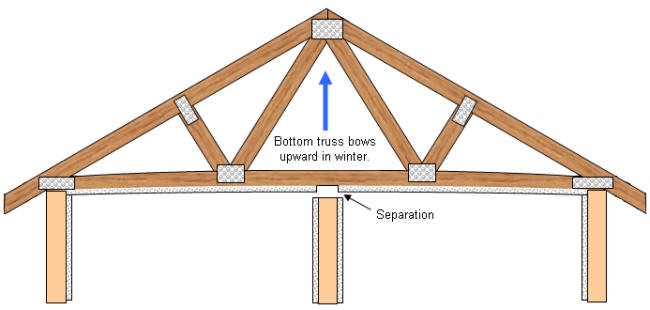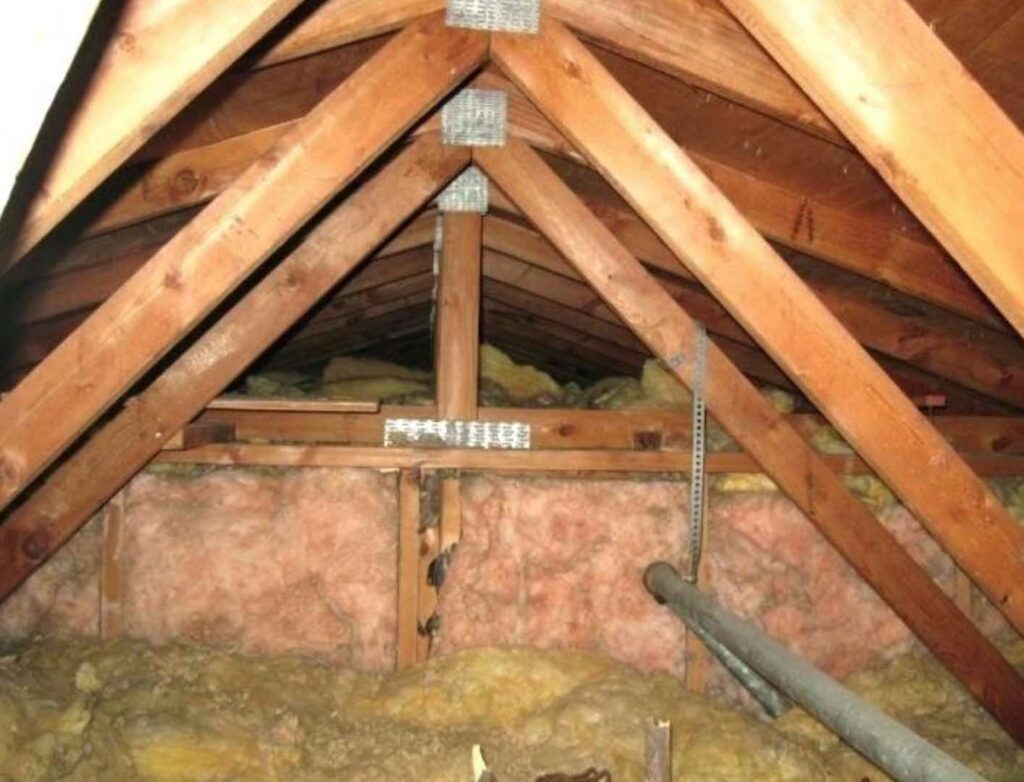This is sometimes done by a homeowner to provide cleared space in the attic for storage but destroys the structural integrity of the truss.
Attic trusses resting on non bearing wall.
A beam directly under a wall usually means that it s a bearing wall whether the beam is in a crawl space basement or on the main floor.
There may still not be any interior bearing walls but you should check.
We usually build on the exterior walls set the trusses and do all of the chord blocking and truss bracing before buildin.
If there are two plates refer to an engineer.
Engineered roof truss systems may be designed to eliminate the need for load bearing walls or change where the bearing walls are located.
An example of a load bearing wall call be seen on the right.
An example of a non load bearing partition wall can be seen on the left.
2 truss chords have been removed.
Chances are this is a non bearing wall.
Most simple construction truss roof home s roof and trusses are supported by the exterior walls perpendicular to the trusses.
Ceiling joists that meet over the wall indicate that it s a bearing wall.
One top plate and a space between the bottom chord of the truss and the top of the wall non load bearing.
3 only part of the roof framing may be trusses and the rest is rafters as in the photo below.
To enable the roof truss to deflect under loads nails to the truss must be installed at the top of the slotted holes and not hammered home to allow a loose fit only.
For instance hanging or cutting ceiling joists adding stairways and adding attic rooms usually require the changing of non load bearing walls to load bearing walls.
Internal wall brackets are used to connect internal non loadbearing walls to roof trusses at maximum 1800mm centres.
During home renovations non load bearing walls can be made to bear weight and vice versa.
When joists trusses are perpendicular to the wall and bear o n the top of the wall that wall is bearing wall.
For example a gable end truss may be designed with support members that transmit the roof weight load outward to the side walls allowing the end wall directly below it to have breaks or openings in it that would otherwise be impossible.
Actually a quick way to determine if the wall is bearing is to cut hole at the top to see if it has one or two top plates.





























